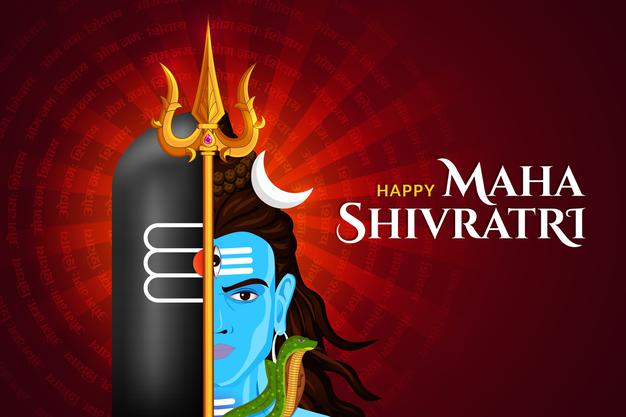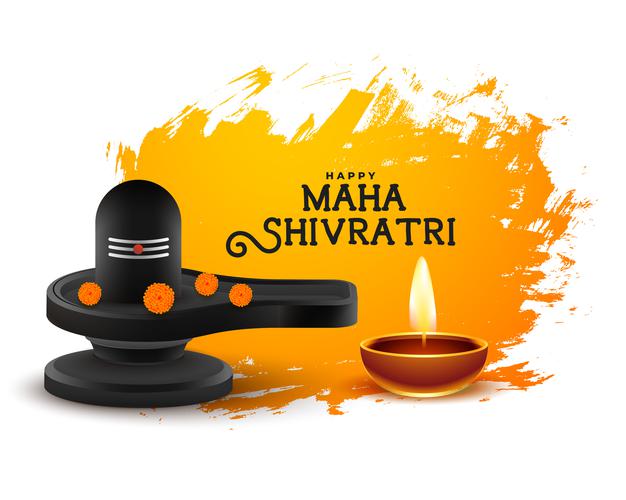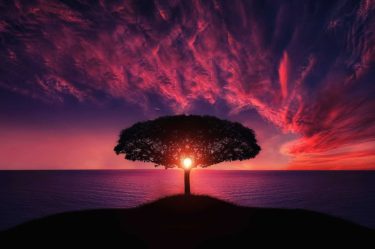Importance of Shivratri
Importance of Shivratri
Mahashivaratri is celebrated all across India. A day awaited by all ardent devotees of Lord Shiva. Many go into fasting and also doing certain sadhanas to make the most of this auspicious day. This year Mahashivaratri falls on 11th March 2021.
There is a Shivaratri in every luni-solar month of the Hindu calendar known as Masik Shivaratri. However, Maha Shivaratri is celebrated only once a year in late winter (February/March) before the arrival of summer. Maha Shivaratri literally means “the Great Night of Shiva”. It’s said that Maha Shivaratri is the night when Shiva performs the heavenly dance of creation, preservation and destruction.
Maha Shivaratri celebrations include – jaagaran all-night vigil and prayers; Offerings fruits, leaves, sweets and milk to Lord Shiva; fasting with the worship of Lord Shiva. Devotees recite the “Om Namah Shivaya” mantra to praise Lord Shiva. On Maha Shivaratri, the ardent devotees of Mahadev, observe fast, performs puja and practice meditation, which leads to health, wealth, success and awakening.
Fasting detoxifies the body and aid meditation. It helps your body feel lighter and relaxes your mind. Fasting also raises the power of your prayers. Moreover, it also helps you get rid of negative emotions like anger, lust, greed, and anxiety. It is advised to fast with fruits or foods that are easily digestible.
The position of stars on the night of Mahashivaratri is considered auspicious for meditation. Thus, it is advisable for people to wake up early and meditate on Shivaratri.

In ancient times, people said,” If you cannot meditate on a daily basis, do it for at least one day every year– on Mahashivaratri.
Chant Mantras
Chant the powerful ‘Om Namah Shivaay’ mantra, it will immediately lift up with energy and mood. ‘Om’ refers to ‘sound of the universe’, it means love and peace. The remaining words of the letters– Na, Ma, Shi, Va, Ya– indicate five elements earth, water, fire, air, and ether.
Worship Shivling
Many Devotees worship the shivling and also do the Abhisheka on to it. Praying for peace happiness, health and wealth for the family and self. Shivling symbolises Lord Shiva. Offering Bel Patra is a part of worshipping the ‘Shivling’. It represents three aspects of your being ‘sattva’, ‘tamas’ and ‘rajas’ that affect your body, mind, and actions. Surrendering to the three brings peace and freedom.
Lord Shiva, Mahadeva is perhaps the most complex of Hindu deity. He is the Auspicious one (Shiva), The terrific one (Rudra), Lord of the Dance (Nataraja), Lord of the universe (Vishwanatha), He is the Destroyer and the Transformer. He is limitless, transcendent, unchanging, formless and also the one without beginning or without end. SHIVA” means the auspicious one. It is humanly impossible to explain Shiva, just as it is impossible to explain the universe yet let’s make an attempt.
Here when we say Brahmman it is not merely the Universe but is the one who is the base and cause of the universe. Brahmman holds the universe. He must not be seen just as a Human-God. That’s a wrong notion. Vedic Scriptures call him the Nirgun Brahman and the Sagun Brahmman.
Shiva exists in 3 states as per our scriptures:-

1. Nirgun: In this state he is formless, and the whole universe and creation lie in the pervasiveness of Shiva.
2. Saguna: In the Saguna state Shiva is the entire universe and his “ansh” is present in the tree, the insect, the animal, male, female and the whole creation. In this state, though all forms arise out of him yet, no form can describe him.
3. Nirgun-Sagun: In the Nirgun-Sagun state Shiva is worshipped as the Shivalingam. The word Shivalingam has been derived from Sanskrit roots Shiva (Lord) + Lingam (Mark/Chinha/Symbol). Hence, Shivalingam is the mark of the lord within its creation. Everything in the world arises out of a dome/a ball/ a Pindi. Be it a tree which comes from a seed which is round, a child which comes from a cell which is round, all heavenly bodies are round, the minutes of cells are round and our very earth is round.
Thus, it is important to understand that he is “Formless”. Though all forms belong to him and he is happy in whatever way you look at him yet there is no single form in the world that describes him.
Let us look at the significance of what he adorns on himself with:-

1. The Moon Crescent – Ardha-Chandrama
From a scientific and philosophical point of view, the moon on Shiva’s forehead depicts control on time in terms of nature. The waxing and waning of the moon was used to calculate the days and months in earlier times.
2. Body smeared with ashes – This symbol has a higher meaning than just the element itself. It represents how Shiva is in its transcendental aspect in nature and that his presence is higher than material presence. The ash is not a normal one, but instead the ash from a cemetery. It corresponds to the Hindu philosophy of life and death, that death is the ultimate reality of life. Everything, in the end, is converted into ashes.
3. Matted Hair/Jata – The symbol of matted hair is that Shiva is the Lord of Wind or Vayu, that every moment, all living beings breathe him.
4. Ganga – In Hindu dharma, Ganga is River Goddess and the most sacred river. Legend has it that the river has the source in Shiva and that flows from the matted hair of Shiva. Symbolically, it is represented by the jet of water smothering out of the head of Shiva and falling on the ground. The legend also has it that Shiva himself allowed that water to flow to humans through an outlet in the river to traverse the earth. The water is thus considered to be pure and has purifying nature.
5. Third Eye – Lord Shiva is often depicted with a 3rd eye and called Triyambhkam, Trinetra etc. The third eye is a symbol for Shiva devotees to develop the sight of knowledge. Our 2 eyes are not always sufficient to judge things and know realities.Shiva’s third eye represents the rejection of desire. Even a normal man must have Samta(balance), Sadhuta (purity of character), and Doordrishti (broader vision). He must not fall prey to desires arising out of women(other than wife), money(other than that which is earned by sweat and purity), fame(other than that which arises out of sattvic actions.From the Yogic point of view, it is said that when the pineal gland or ‘third eye’ is awakened, one is able to see beyond space-time into time-space. It raises the frequency on which one operates and moves one into a higher consciousness.. with more research it is being realized that it is essentially a spiritual antenna.
6. The Snake – The snake coils three rounds on the neck of Shiva, and that represents time in its most accurate form: the past, the present and the future, and the coiling signifies the cyclic nature of it. And him wearing the snake shows that Shiva is immune to the wrath of time and death. They also represent dormant energy known as Kundalini Shakti that resides within him.
7. Tripunda- The 3 stripes on the forehead called the Tripunda are a symbol of the 3 Gunas – Sattva Guna – is harmonious, pure, welfare and construction base, kindness, goodness, creative, balanced. RajasGuna – is confusion, overactive or eager, passionate, self-centred, egoist Tamas Guna – is lazy, heavy, destructive, impure.
8. Tiger Skin- The tiger in Hindu dharma represents the vehicle of Shakti, the Goddess of power and force. Shiva wearing the tiger skin represents his power and that he is the master of Shakti that goes beyond any other force. Tiger also represents lust, and Shiva sitting on it shows that he has conquered lust. Moreover, the tiger is also a symbol of energy, and in this case, it represents Shiva as the source of relative energy that flows throughout the universe, and that Shiva activates the energy with his own Divine will to project the universe in endless cycles.
9. Rudraksha- Beads mean the elements of the world, and him wearing the necklace means that Rudraksha is firm about the rules of the universe and that even he follows the cosmic laws.
10. Damaru- It represents the cosmic sound. The sound of Damaru is called Pranavamand and represents the “Shabda Brahma” or OM. When a damaru is vibrated, it produces dissimilar sounds which are fused together by resonance to create one sound. The sound thus produced symbolizes Nada, the cosmic sound of AUM, which can be heard during deep meditation.
11. Trishul- There are three prongs in the spear of Shiva, and they represent three of the fundamental power of Shiva: will (icchya), action (kriya) and jnana (knowledge). This represents that he can destroy evil and ignorance.
12. Nandi – Nandi is the vehicle of Shiva, and it symbolizes both power and ignorance. The bull is called “vrisha” in Sanskrit, and it means “righteousness”. Nandi with Shiva, thus, symbolizes Shiva as a companion of righteousness

When we see these beautiful meanings it shows us the importance of while meditating on Lord Shiva we can have a control on our 3 gunas, Pancha indriyas, Pancha Tattvas and by knowing the importance of the lord in the Nirguna state when we meditate on him we get to experience the vastness of the bhramand. This would help us to open our shashrachakra ( crown chakra) and awaken the kundalini shakti lying dormant within us. ( though this has to be done under the guidance of well verses gurus/ masters ).
Take time out on the auspicious day of MahaShivaratri and meditate on Lord Shiva and seek his blessings for you and your family and also for peace, happiness and unity in our world.
🙏 ॐ नमः शिवाय🙏
🙏Om Namah Shivay 🙏
So it is
( reference from Vedic scriptures)
The Spiritual Princess




